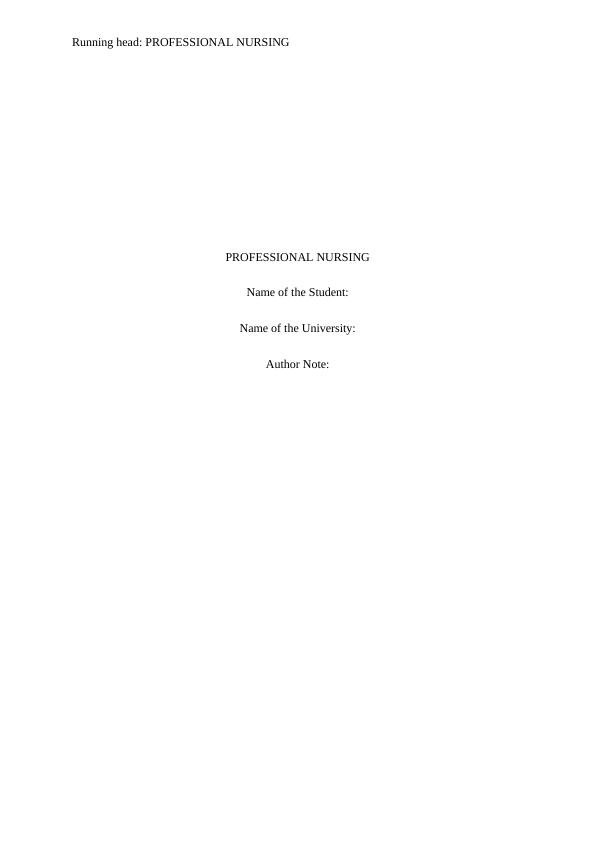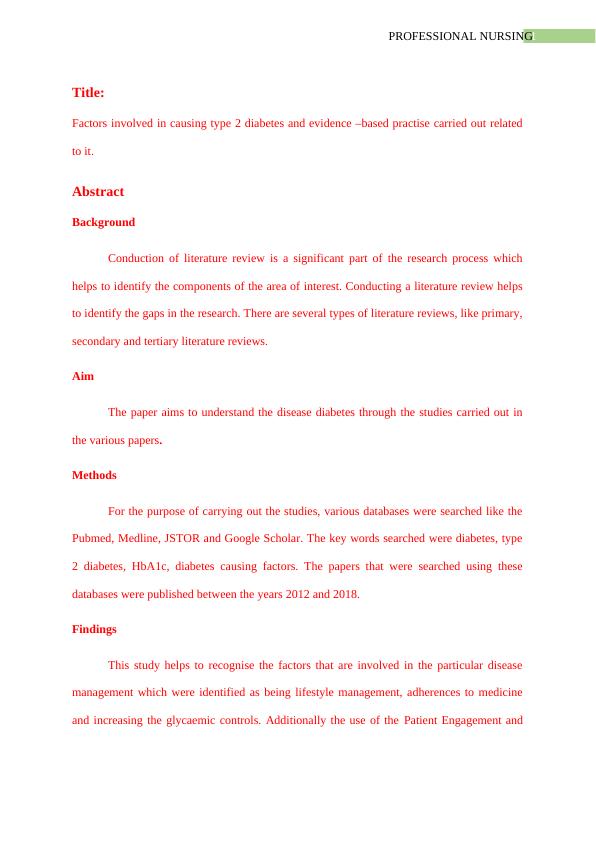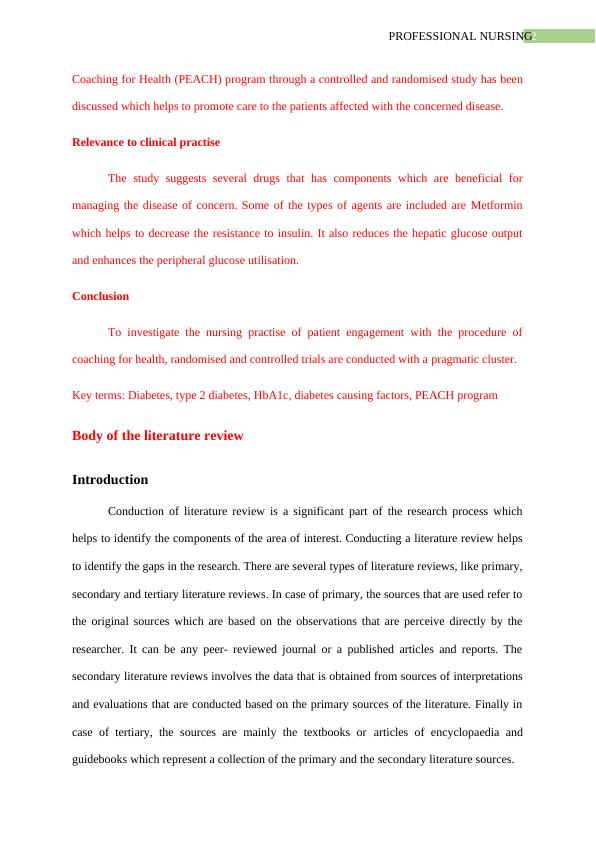Factors Involved in Type 2 Diabetes and Evidence-Based Practice
Develop a narrative literature review on a topic that impacts nursing practice, using skills such as searching databases, collating relevant articles, synthesizing findings, and analyzing studies.
10 Pages2285 Words252 Views
Added on 2023-06-10
About This Document
This literature review identifies factors involved in type 2 diabetes management and evidence-based practices for its treatment. The study suggests several drugs that have components beneficial for managing the disease. The paper also highlights a randomised study using pragmatic cluster which showed that existing generalist practice nurses without prescribing rights were effective in comparison with that of the usual primary care for type 2 diabetes.
Factors Involved in Type 2 Diabetes and Evidence-Based Practice
Develop a narrative literature review on a topic that impacts nursing practice, using skills such as searching databases, collating relevant articles, synthesizing findings, and analyzing studies.
Added on 2023-06-10
ShareRelated Documents
End of preview
Want to access all the pages? Upload your documents or become a member.
Nursing Assessment Task 2022
|13
|2802
|12
Supported self-management for people with type 2 diabetes: a meta-review of quantitative systematic reviews
|11
|10229
|36
Effectiveness of Self-Management Interventions for Diabetes
|14
|2152
|60
Effectiveness of Mobile Health Applications on Diabetes Management
|14
|3719
|195
Introduction to Advanced Nursing Practice
|10
|2528
|47
Effectiveness of Strict Glucose Control on Diabetic Neuropathy: A Meta-Analysis
|9
|1616
|87



